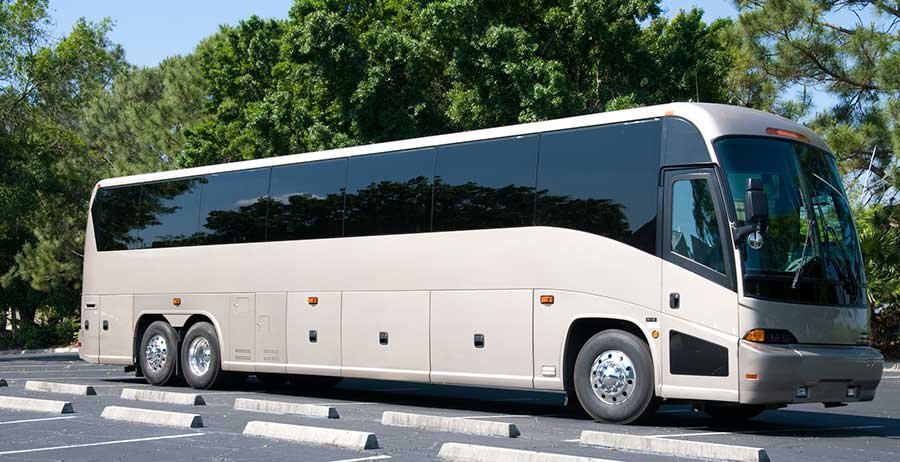Driverless taxis are poised to revolutionise the transportation industry, and many experts predict that they will become a common sight on city streets in the near future.
These vehicles, which are equipped with advanced sensors and artificial intelligence software, are designed to operate without a human driver, providing a safe, efficient, and cost-effective mode of transportation for passengers.
The advent of driverless taxis has been met with both excitement and concern. While some experts believe that these vehicles will significantly reduce traffic congestion, lower transportation costs, and improve road safety, others worry about the potential risks associated with autonomous driving, such as accidents caused by software malfunctions or cyber attacks.
Nevertheless, many companies are investing heavily in this technology, and it is expected to play a major role in shaping the future of transportation.

Key Takeaways
- Driverless taxis are expected to become a common sight on city streets in the near future, providing a safe, efficient, and cost-effective mode of transportation for passengers.
- While some experts believe that these vehicles will significantly reduce traffic congestion, lower transportation costs, and improve road safety, others worry about the potential risks associated with autonomous driving.
- Despite these concerns, many companies are investing heavily in driverless taxi technology, and it is expected to play a major role in shaping the future of transportation.
The Advent of Driverless Taxis
The advent of driverless taxis is a hot topic in the transportation industry. With the rise of autonomous car technology, it is no surprise that the idea of driverless taxis has become increasingly popular.
The concept of driverless taxis has the potential to revolutionise the taxi industry and transform the way people travel.
Driverless taxis are fully automated vehicles that use software and sensors to navigate roads and transport passengers to their desired destinations.
These vehicles are equipped with advanced technology that allows them to communicate with traffic lights, other vehicles, and pedestrians.
The technology used in driverless taxis is constantly evolving, and it is expected to become more sophisticated over time.
Waymo, a subsidiary of Alphabet Inc., is one of the companies leading the way in the development of driverless taxi technology.
Waymo has been testing its driverless taxi service in Phoenix, Arizona, since 2017. The company has been working on improving its software and sensors to ensure that its vehicles can navigate roads safely and efficiently.

The adoption of driverless taxis has the potential to transform the taxi industry. Driverless taxis can operate 24/7, which means that they can provide a more efficient and convenient service to customers.
They can also reduce the cost of transportation, as there is no need to pay for a driver’s salary. This can make transportation more affordable for people who cannot afford to own a car.
In conclusion, the advent of driverless taxis has the potential to transform the transportation industry. With the development of advanced technology, driverless taxis can provide a more efficient and convenient service to customers.
While there are still some challenges that need to be addressed, such as safety concerns and regulatory issues, the future looks bright for driverless taxi technology.
Technological Aspects and Safety Measures
Vehicle Technology and Infrastructure
The success of driverless taxis depends on the technology and infrastructure they use. Autonomous driving technology relies on a combination of sensors, cameras, and software to navigate the roads.
Electric vehicles are the most likely choice for driverless taxis, as they offer low operating costs and zero emissions.
However, the infrastructure for electric vehicles needs to be expanded to support the increased demand.
Companies like Tesla and Apple are investing heavily in autonomous driving technology, while automakers like Ford and General Motors are partnering with technology firms to develop their own driverless vehicles.
Safety and Regulation
Safety is a major concern for driverless taxis. Public trust in the technology needs to be established, and the risk of collisions needs to be minimised.
Human error is responsible for the majority of accidents on the road, but driverless taxis are not immune to accidents.
Regulations need to be established to ensure that the technology is secure and roadworthy. Governments and industry bodies are working together to develop safety standards for autonomous vehicles.
Impact on Transport and Traffic
Driverless taxis have the potential to revolutionise the transport system. They could reduce congestion and improve the efficiency of public transport.
Commuting times could be reduced, and the cost of transport could be lowered.
However, the impact on the market for ownership of vehicles is still uncertain. Some predict that subscriptions to driverless taxis will replace car ownership, while others believe that the market will remain largely unchanged.
The Role of Major Players
Several major players are involved in the development of driverless taxis.
Uber is one of the most well-known companies in the market, with a fleet of autonomous vehicles in Phoenix, Arizona. AutoX is another company that is developing driverless taxis, with a focus on safety and reliability. Other automakers, such as Daimler, are also investing in the technology.
Economic Implications and Predictions
The economic implications of driverless taxis are significant. The cost of transport is likely to decrease, which could have a significant impact on the business models of taxi companies.

The supply chain for driverless taxis is also likely to be different, with a focus on software and technology rather than physical parts. Some predict that the market for driverless taxis will be worth billions of dollars in the coming years.
Overall, driverless taxis have the potential to transform the way we think about transport.
However, the technology is still in its early stages, and there are many challenges that need to be overcome.
The success of driverless taxis will depend on the ability of companies to develop reliable and safe technology, establish public trust, and navigate the complex regulatory landscape.
Conclusion
In conclusion, the rise of driverless taxis is set to shape the future of transportation in a significant way.
There are still some challenges to overcome, such as regulatory issues and public acceptance, the potential benefits of this technology are immense.
Driverless taxis have the potential to greatly reduce traffic congestion, lower transportation costs, and improve road safety.
They could also provide increased accessibility to transportation for elderly and disabled individuals, as well as those living in areas with limited public transportation options.
While predictions about the adoption rate of driverless taxis vary, it is clear that this technology will continue to gain momentum in the coming years.
As the technology improves and becomes more widely accepted, it is likely that more and more people will choose to use driverless taxis as their primary mode of transportation.
Overall, the future of driverless taxis is bright, and it is clear that they will play an important role in shaping the future of transportation.
As the technology continues to evolve, it will be interesting to see how it is integrated into our daily lives and how it changes the way we think about transportation.
FAQs
What are the potential benefits of using driverless taxis?
Self-driving cars are starting to make their way into the UK’s transport scene. Early tests in London, Milton Keynes, and Edinburgh show a number of possible benefits, such as easing traffic in Britain’s notoriously crowded city centres by finding the best routes and cutting down on passengers’ cruising time.
Transport for London says that self-driving cars could help cut traffic in cities by up to 12% if they were used with public transport. Once the technology gets better, cost estimates show that it could save between 3 and 5 pounds per trip compared to standard black cabs. Safety is still a top concern in UK testing, and the Department for Transport’s strict rules stress that changes should be made slowly.
Perhaps most importantly for British society, driverless taxis could make it much easier for the country’s older people to get around, especially in rural areas where public transport isn’t as good. The technology is also in line with the UK’s Net Zero policy, which aims to cut down on emissions from transport.
What are some of the challenges facing the implementation of driverless taxis?
But there are still a lot of issues that need to be fixed before driverless cabs become common on British roads.
Tests are still going on all over the country. There are still some tech issues that need to be fixed. This is particularly true when it comes to the UK’s changing weather and complicated urban settings, such as London’s historic narrow streets. The UK’s rules need to be changed so that self-driving cars are fully legal. The 2022 Transport Bill from the government set the basic rules, but full rules are still being made. YouGov polls from the past few months show that only 43% of Britons are okay with driverless services.
This shows that people still don’t trust everyone. It’s still a big worry what will happen to the UK’s more than 300,000 cab and private hire drivers. Transportation groups want plans to help them get through this. To make things more clear about insurance and liability, there needs to be a wider spread across the country.
How will cabs that don’t need drivers change the job industry for taxi drivers?
There are good reasons for the 365,000 licensed cab and private hire drivers in the UK to be worried about the slow rollout of driverless taxis. Statistics from the Department for Transport show that this group of workers has grown by 16% since 2015, with most of the growth happening in cities.
The Office for National Statistics says that as technology grows over the next ten years, it could affect up to 65% of these jobs. But the change in the industry won’t happen quickly. For example, in the UK, most self-driving cars need safety drivers, which creates jobs for the time being.
There are new jobs opening up in specialised customer service, fleet management, and remote supervision (where operators watch over multiple cars). The Skills and Post-16 Education Act 2022 set up ways for transport workers who will lose their jobs because of technology to get new skills.
Leading UK companies like Addison Lee and Uber are working on hybrid models where self-driving cars take care of predictable routes and human drivers handle more complicated trips and premium services. This suggests that there will be a transition period instead of instant displacement.
What safety concerns are associated with driverless taxis?
Recent tests in the UK conducted by Wayve and Oxbotica show that there are real problems with how autonomous vehicles can use our roads. In London’s tests in 2023, vehicles had a hard time with unmarked roadworks and people walking in busy places acting in ways that weren’t expected.
A record from the UK Autonomous Vehicles Registry shows that during Bristol’s six-month test, 17 safety-related disengagements took place. Insurance companies like Aviva bring up liability issues, especially since recent changes to the law put more responsibility on operators and makers. There is still a lack of trust in technology.
An RAC poll from 2024 found that 52% of Britons are worried about technology breaking down in bad weather. The accident rates in controlled environments look good, but performance in real life in busy cities still needs a lot of work before it can be widely used.
Are cabs that don’t need drivers a good way for people with disabilities or mobility issues to get around?
In the UK, studies show that making things easier to get to are mostly positive. Transport for London’s 2023 test with five modified autonomous vehicles showed that 78% of wheelchair users were satisfied, though there were still problems with getting on and off the vehicles.
In its first three months, the new Mobility 4 All program in Manchester, which was made just for disabled customers, helped 93 people who had trouble moving around. There are still practical issues. For example, in the UK, wheelchair users have to figure out how to get into autonomous vehicles on their own because staff aren’t always available.
In Disability Rights UK’s poll on public transport, voice commands and app interfaces that work on their own were found to be problematic for older and visually impaired users. With £42 million from the government’s Accessible Transport Innovation Fund, autonomous projects must include accessible design, though how this is done varies. New technology shows promise, but fully accessible service won’t be available for a few more years, according to Department of Transport estimates released in January 2024.
How will the general use of taxis without drivers affect traffic?
New traffic modelling from Transport Systems Catapult in the UK shows that congestion has a variety of affects. Oxford’s limited 2023 trial saw a 7% drop in downtown traffic when 50 self-driving cars took the place of about 75 private cars.
However, data from Milton Keynes showed that when autonomous vehicles were not in use, they raised road use by 13% while repositioning between rides. A report from the Centre for Connected and Autonomous Vehicles in March 2024 says that self-driving taxis could cut the need for parking in city centres by 15 to 20 percent.
This could free up important urban space for other uses. Transport for West Midlands found that traffic flow was better where self-driving cars used specialised digital infrastructure, but performance was worse where systems were not connected.
According to the RAC Foundation’s most recent study, the overall effects of traffic congestion rely a lot on how many people use shared rides. Their models show that congestion gets worse when the average number of passengers per vehicle drops below 1.8, but it gets better when more people use shared rides.






